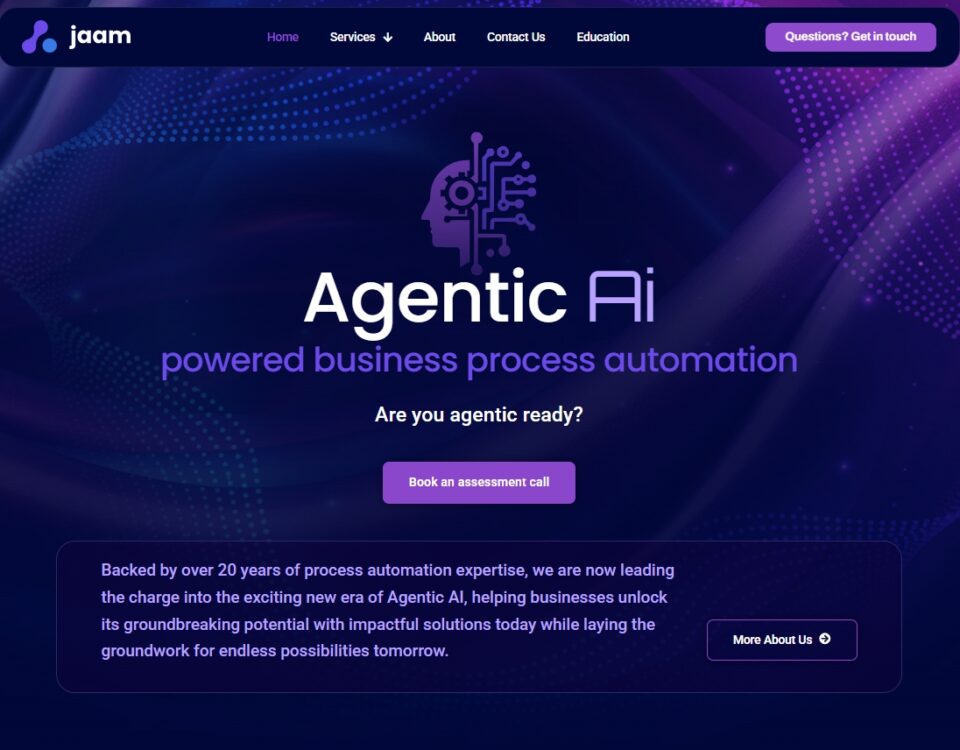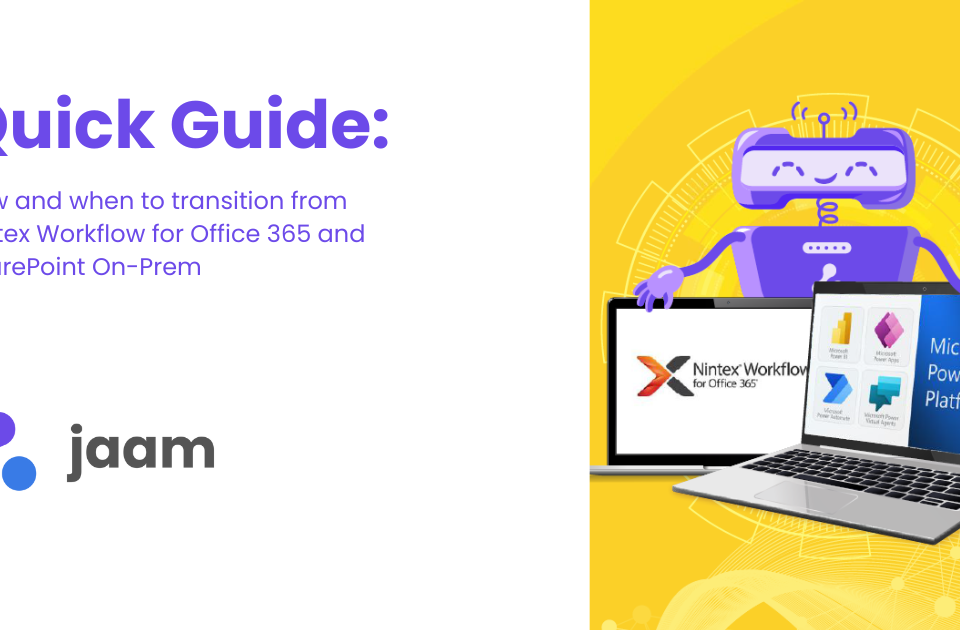Image above generated using DALL-E from OpenAI
It’s difficult to ignore the rise of AI-powered tools in the business landscape. Whether you’re looking to kick your automation programme up a few notches or you’re just dipping your toes into the digital transformation waters, there’s a good chance AI has popped up on your radar more than once. Yet, with so many solutions available, how do you decide where to begin?
In this blog post, we round up 10 AI tools that are easy to adopt and use, offering you unique ways to simplify complex tasks, save time and achieve more with minimal effort.
Let’s start by demystifying AI and exploring its evolution into the widely accessible, mainstream technology that so many organisations are harnessing today.
What is AI?
Andrew Ng, a leading figure in artificial intelligence, famously called AI “the new electricity”. Just as electricity revolutionised industries, homes and society at large in the 19th and 20th centuries by powering new inventions and enabling significant advancements, AI is positioned to be a similar force of change in the 21st century.
The term AI refers to the capability of a computer or a machine to mimic human-like intelligence. Just like humans use their brains to analyse information and figure things out, AI enables machines to process information, learn from it and perform tasks that usually require human intelligence. This can include understanding human language, recognising images or patterns, playing games and even driving cars.
In any definition of AI, it’s important to distinguish between AI and robots, a common point of confusion. While AI is the ‘brain’ of a machine, able to learn and make decisions on its own, robots (be they physical machines or computer programmes) are built to do specific, repetitive jobs following set rules. Robots don’t naturally learn or change their actions by themselves unless they’re equipped with AI.
How long has AI been around?
The exact moment when AI hit the mainstream is hard to pinpoint due to the gradual integration of AI technologies into various aspects of daily life and industry. However, the early 2010s marked a significant turning point in public awareness and adoption of AI technologies.
Key milestones and technologies have contributed to this evolution:
- Early 2000s: The concept of AI was known much earlier, but its presence started to become more noticeable in the early 2000s. This period saw the rise of machine learning algorithms being applied to practical problems, such as spam filtering in emails and recommendation systems in e-commerce and entertainment (for example, the recommendation systems used by Amazon and Netflix).
- Mid-2010s: AI became increasingly integrated into consumer technology, with virtual assistants like Apple’s Siri (introduced in 2011), Amazon’s Alexa (2014), and Google Assistant (2016) becoming commonplace in smartphones and home devices. These assistants made AI a daily presence in many people’s lives.
- Late 2010s: AI and machine learning began to impact a broader range of industries and applications, from autonomous vehicles to healthcare diagnostics. The rise of open-source AI software and cloud computing has democratised access to powerful AI tools, enabling startups and large corporations alike to innovate with AI.
- 2020s: AI technologies have continued to evolve, with generative AI, like OpenAI’s GPT models, demonstrating capabilities in generating human-like text, creating art and more.
Considering these advancements, what tools are readily available and accessible to your business today? We’ve shortlisted 10 options.
10 AI tools to explore
1. Microsoft Copilot
Microsoft Copilot is a term that broadly encompasses various AI-powered tools and features integrated across Microsoft’s suite of products and services to enhance productivity, creativity, and decision-making. These Copilot features are designed to assist users by providing contextually relevant suggestions, automating routine tasks, and generating content across applications like Microsoft 365, which includes Word, Excel, PowerPoint, Outlook, and Teams.
The goal of Microsoft Copilot is to transform the way users interact with software, making it more intuitive and efficient by leveraging advanced AI technologies to understand user intent and provide real-time assistance.
2. Microsoft AI Builder
This is a capability within the Microsoft Power Platform that allows you to integrate AI resources into your processes without the need for deep technical expertise. AI Builder can, for instance, automate the extraction of information from documents, such as invoices, receipts or forms. This capability is particularly useful for your finance and accounting team, helping them to automate data entry and validation processes to cut the manual workload and boost accuracy. You could also use this tool to sift through large volumes of text, like customer feedback or reports, and categorise or summarise the key points for you.
3. ChatGPT
ChatGPT is an advanced language model developed by OpenAI that can understand and generate human-like text based on the input it receives. In a business context, ChatGPT can serve as a versatile tool for a range of applications including customer service, where it can power chatbots to handle enquiries and provide instant support; or content creation, where it can assist in drafting articles, reports and marketing copy. When you need a sounding board, this tool can even act as a brainstorming partner, offering ideas and suggestions for project planning and problem-solving. In some ways, ChatGPT is responsible for the recent public awareness explosion around AI.
4. DALL-E
Developed by OpenAI, DALL·E is an AI system that can create images from textual descriptions. Essentially, all you have to do is describe a scene, character or concept in text, and DALL·E uses its understanding of both art and the world to generate images that match your description.
This can be a handy tool for creating unique visual content for marketing campaigns and social media posts, quickly visualising new product concepts or designs, generating custom illustrations for articles, designing logos and much more. In fact, we used DALL-E to create the image above that accompanies this blog :).
5. Google Bard
Google Bard, available in multiple languages, offers you a versatile AI tool capable of generating text, facilitating creative tasks and integrating with apps.
Jenny Blackburn, VP of User Experience at Google, has suggested a number of useful ways to put this AI tool to work. These include writing a meeting recap email based on a photo of handwritten notes, generating captions for photos and drafting content like emails, cover letters, blog posts and business plans.
6. Google Duet AI
Integrated across Google Workspace, you can use Duet AI in Google Docs and Gmail, where it offers a supportive hand in drafting and refining business communications, including emails, blog posts and project plans. Or you could ask it to help organise and process data within Google Sheets, to save you time and effort.
Duet AI can also bring more creativity and originality into your presentations by generating custom images for Google Sheets or personalised backgrounds for Google Meet calls. Imagine prompting it to create a vintage library, steampunk workshop or medieval castle as your backdrop.
7. Lumen5
Using this AI-powered video creation platform, any team member can easily produce engaging video content. For instance, by sharing a link to a recent company blog post or whitepaper, Lumen5 employs natural language processing and other advanced technologies to transform your written material into a storyboard. This storyboard is then converted into an original video, drawing on a vast library of media assets, which you can share on social media or incorporate into presentations.
8. Podcastle
This platform uses AI to transform written content into engaging audio formats, such as podcasts, webinars, tutorials, online support tools and internal comms. It can accommodate up to 10 participants in remote recordings and provides an Editor tool that makes it quick and easy to assemble and publish your content, saving hours of your team’s time. It can help you to create professional audio assets by automatically removing background noise, cutting out filler words, and trimming awkward pauses, ensuring a smooth listening experience.
9. Legal Robot
While you should never rely on Legal Robot for professional legal advice, it is an extremely useful tool for understanding and drafting routine legal documents. By analysing your document alongside thousands of others, it offers suggestions for enhancements and verifies compliance with the latest standards.
Key use cases include contract analytics, where it pinpoints issues with legal style and risky language; and translating legalese into Plain English, so your documents are clear and easy to understand.
10. SaneBox
This is a smart, trainable assistant for your email inbox, designed to enhance focus and minimise clutter. It uses AI – and your input through special filters – to identify important and relevant emails, automatically filtering the rest into designated folders for you to review at your convenience. To ensure you never miss anything important, SaneBox provides a daily summary of its actions. You can also use it to ‘Snooze’ emails or switch your inbox to ‘Do Not Disturb’ mode, providing uninterrupted focus time.
Thinking about bringing AI into your business?
The jaam team is here to help you select and roll out the right solutions. Whether you want to improve decision-making with data analytics, automate routine tasks to free up creative human potential, or engage with customers in more personalised and effective ways, we’re here to ensure you get the best out of what AI can offer. Why not get in touch?






